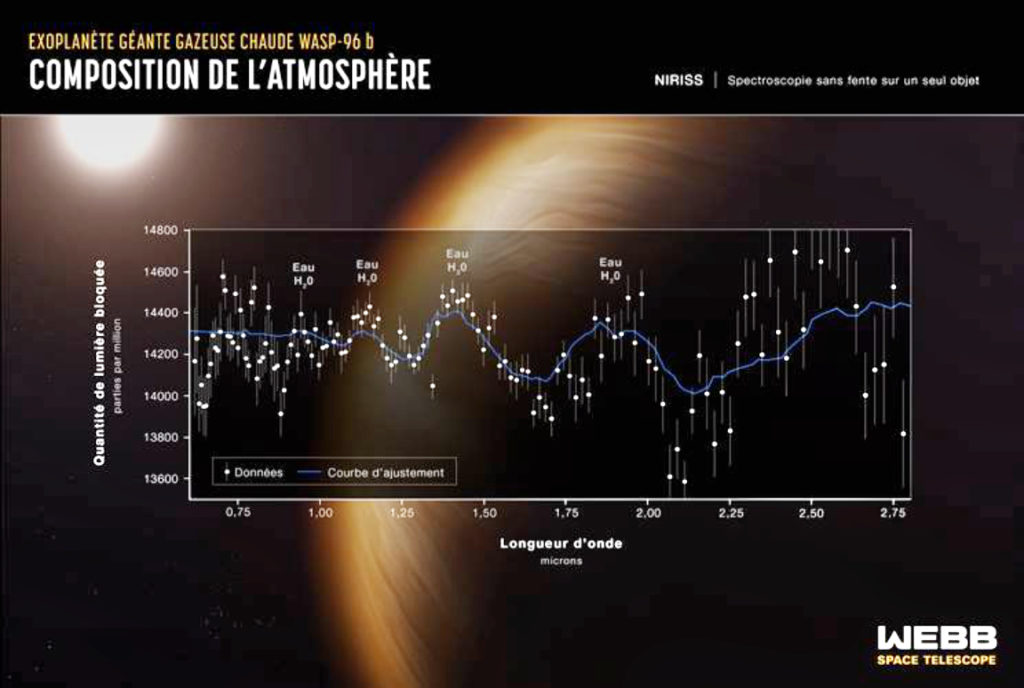
A glimpse of the hidden universe was revealed through the recent release of the James Webb Space Telescope’s first science images and spectroscopic data.

Observations made by the powerful space telescope uncovered an array of spectacular, cosmic features. Future discoveries enabled by Webb promise to redefine our understanding of the universe and our place in it.
An observation made by Canada’s Near-Infrared Imager and Slitless Spectrograph (NIRISS) unambiguously confirmed the presence of water molecules in the atmosphere of WASP‑96 b, an exoplanet in orbit around a Sun-like star located roughly 1,150 light-years from Earth. This is the most detailed near-infrared transmission spectrum of an exoplanet atmosphere captured to date.
The Canadian-built instrument captured and broke apart the starlight flowing through the atmosphere of this hot gas exoplanet. This process allows researchers to obtain key information, especially the potential presence of life-supporting molecules such as oxygen, carbon dioxide and water. NIRISS’s sensitive observation of WASP‑96 b also contained evidence for haze and clouds, previously thought not to exist in the atmosphere of this planet.

Canada’s Fine Guidance Sensor (FGS) was critical in producing these stunning data and images, thanks to its ability to remain locked on to guide stars for long periods of time while the telescope is in motion. Designed to align Webb with incredible precision, the FGS will be used with all of Webb’s instruments and throughout all observations.
Now entering its scientific operations phase, Webb becomes an extraordinary tool for astronomers in Canada and around the world to examine every phase of cosmic history, from the origin of the universe to the formation of galaxies, stars, and planets.
Thanks to the Canadian Space Agency’s contributions and expertise, researchers across Canada are among the first to access the coveted observing time using all instruments aboard the most complex and powerful space observatory ever built.
Quick factoids…
- NIRISS’s observation of WASP-96 b took place on June 21, 2022
- Webb is a collaboration between NASA, the European Space Agency, and the Canadian Space Agency (CSA)
- The Canadian Webb science team is led by Principal Investigator Dr. René Doyon of the Université de Montréal; and Project Scientist Dr. Chris Willott from National Research Council Canada’s Herzberg Astronomy and Astrophysics Research Centre
- The integrated FGS/NIRISS unit was built and tested by Honeywell with the help of scientists and engineers from the CSA, the Université de Montréal, NASA and the Space Telescope Science Institute
“These first images are a testament to Webb’s power and humanity’s relentless drive to learn more about space. For decades, talented Canadian scientists and engineers have worked closely with colleagues from around the globe to achieve this great feat. And now, our world-renowned astronomers are poised to make unprecedented discoveries at the cutting-edge of galactic research,” said Canada’s Honorable François-Philippe Champagne, Minister of Innovation, Science and Industry.
